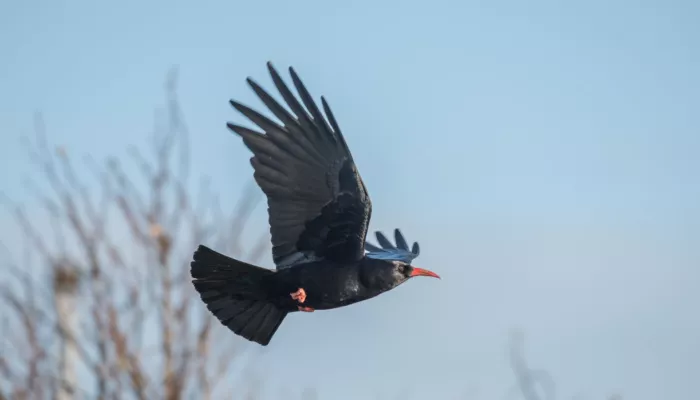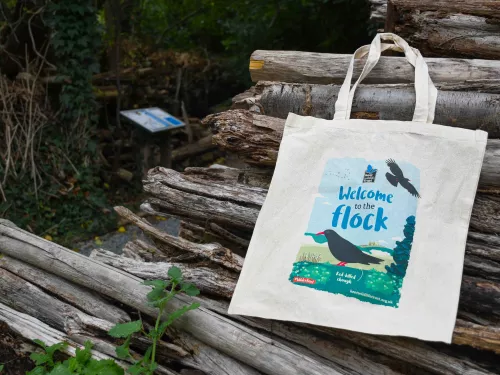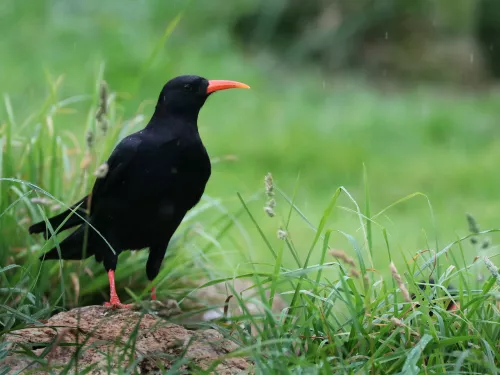
The Chough Reintroduction Project so far...
We're pleased to say that there are clear signs that the once-extinct red-billed chough will thrive again in the South East. This summer in 2025, a young red-billed chough has successfully taken flight from a wild nest in Dover, marking the first time in more than two centuries that the rare bird has lived independently in the wild in Kent.
Earlier this spring, a nest was discovered at Dover Castle, which produced the chick that successfully fledged last month. This remarkable milestone comes just three years after the launch of an ambitious reintroduction programme, led by Wildwood Trust, Kent Wildlife Trust, and Paradise Park. The successful fledging marks a significant step forward in restoring this species to its natural habitat.
Choughs have been absent from the wild in Kent for over 200 years due to habitat loss and historical persecution. Yet, this species has retained a deep cultural link throughout Kent's history - these iconic birds can be spotted on pub signs across our county as well as on the Canterbury coat of arms itself.
For four decades, Kent Wildlife Trust has worked alongside others, including the National Trust, English Heritage and White Cliffs Countryside Partnership, to restore chalk grassland habitat and reintroduce conservation grazing management across East Kent. Extensive feasibility studies have shown that, thanks to this dedicated restoration work, there is now suitable habitat to support the return of wild red-billed choughs to Kent - and we couldn't be more delighted to welcome them back.
Thank you to everyone who has supported this reintroduction project so far, whether by visiting the chough aviary at Dover Castle, donating to our appeal or spreading the word about this project online and in your communities. We could not have done it without you. But the work is far from over and we still need your support to allow further releases and ensure the ongoing population keeps flying high in Kent.
How you can help

FAQs
The red-billed chough is a rare member of the crow family with glossy black plumage, red legs and a bright red beak. The chough was once native to Kent but became extinct here more than 200 years ago due to intensive farming practices and persecution.
The return of choughs will:
- demonstrate the incredible potential of conservation work to return missing species, paving the way for further habitat restoration across our county
- encourage farmers and landowners to reduce the use of worming and other treatments in livestock, thereby benefitting the whole ecosystem
- engage communities in conservation due to their cultural and historical significance to Kent
Choughs are specialist soil and dung invertebrate feeders. In other words, they eat insects.
Choughs favour short chalk grassland - a habitat which has declined significantly due to intensive farming resulting in the extinction of wild choughs in Kent.
For four decades, Kent Wildlife Trust has worked alongside others, including the National Trust and White Cliffs Countryside Partnership, to restore chalk grassland habitat and reintroduce conservation grazing management across East Kent.
Extensive feasibility studies have shown that, thanks to this dedicated restoration work, there is now enough suitable habitat to support the return of wild red-billed choughs to Kent - and we couldn't be more delighted to welcome them back.
Large herbivores once roamed our landscapes. Their grazing behaviours maintain key habitats (such as grassland and heathland) by controlling the spread of certain plant species and allowing many others to thrive.
In order to mimic this ancient activity, we have introduced grazing animals, such as sheep, cattle and ponies, as well as pigs, to many of our reserves. Their grazing and rooting behaviours help to naturally and effectively restore and maintain biodiversity. These animals also provide another service: their dung is home to a variety of invertebrates, all of which are eaten by choughs.
Chough used to be part of this landscape and evolved to coexist with other species such as ravens and peregrines. Although they may compete for some resources such as nest sites, we will monitor this and provide additional nesting opportunities if required.
As a specialist soil and dung invertebrate feeder, choughs are unlikely to outcompete any other species. There are no other species sharing the short grassland habitat which rely solely on soil and dung invertebrates.
Many will know the story of the murder of Thomas Becket. The year 2020 marked 850 years since his dramatic murder, but you may be less familiar with a mythical connection to the chough.
It is rumoured that as Thomas Becket lay dying, a crow flew down, paddled in his blood and acquired a startling red beak and feet, transforming into a chough.
Sometime after his death, Thomas was attributed a coat of arms featuring three choughs, which first appeared about 100 years later in Canterbury Cathedral, and, in the 14th century, the City of Canterbury adopted a coat of arms with three choughs and a royal lion.
The choughs’ connection to Dover was also immortalised by William Shakespeare who wrote of these charismatic birds in ‘King Lear’. He describes ‘the Crowes and Choughes that wing the midway ayre’, at what became known as ‘Shakespeare Cliff’.
The project partnership will be releasing small family-sized cohorts of between 6-12 birds each year for a minimum of five years in order to establish a breeding population of 50 birds.
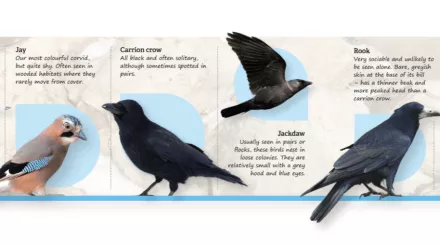
Latest news
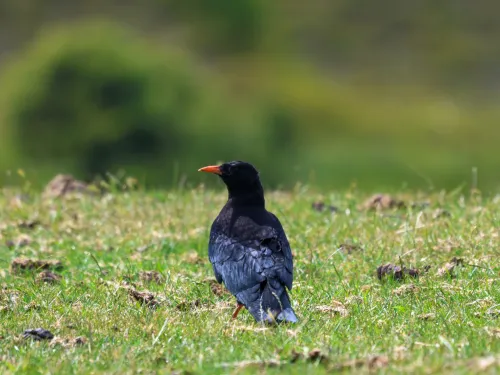
Historic breakthrough as wild-born chough takes to the skies and thrives in Kent for the first time in over 200 years
Conservationists celebrate landmark moment in bid to return red-billed choughs to South East England.
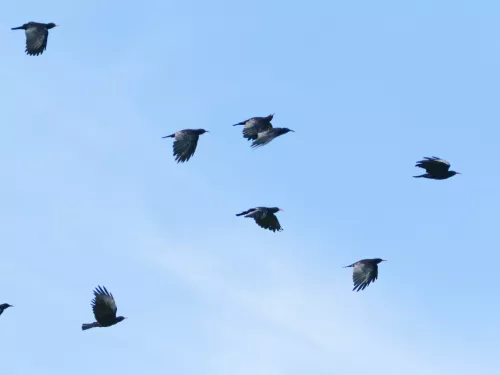
Meet Jenny, our Blue Mentor, at Dover Youth Festival
Nature-themed crafts on offer for young visitors to the festival
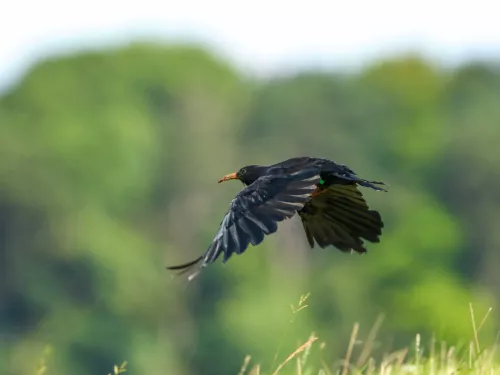
The sky's the limit for Kent conservationists at nineteen red-billed chough take flight in the South East after a 200-year absence
A total of nineteen red-billed chough have now released into the wild as part of a groundbreaking conservation project to return the at-risk species to Kent.

